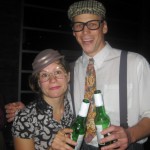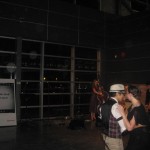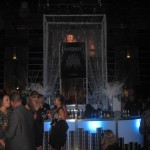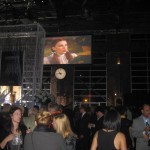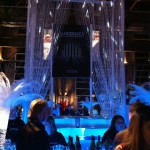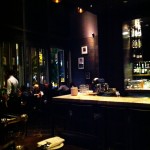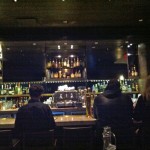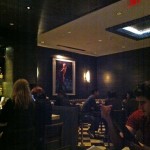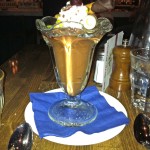I recently had the opportunity to review the new raw bar at the Four Season’s Yew restaurant + bar. My dining partners were the lovely PR executive, Kate Colley of Kate Colley Communications, Cassandra Anderton of GoodLife Vancouver, Juanita Ng of The Vancouver Sun, Deana Lancaster of North Shore News, along with food, wine and spirits writer Judith Lane. Director of Food and Beverage, Stephane Castera, delighted us with his personal anecdotes and stories. I also met the talented and passionate Executive Chef, Ned Bell, and the Restaurant Operations Manager, Jeff Hanson, with his memorable and quirky Don Cherry outfit changes!
The concept of the new raw bar is “Ocean to Table”. With a few restaurants in town executing the raw bar concept, it was interesting to see Yew’s offerings with the renowned Four Seasons luxe quality and ambience. With a focus on fresh seafood and sustainable best practices, the results show up in the care and attention to the menu.
We were served snacks like Crispy Lobster Sticks with Black Sesame and Red Miso dressing, Dungeness Crab Tacos with Ponzu dressing along with Lemon Nori rolls and Cheddar Jalapeno bread.
An award winning cocktail dubbed the Elizabeth Taylor that I tasted was impressive. Whisky, Cynar, Violette, Aperol & sparkling wine were expertly mixed and I am told this cocktail won the 2011 Giffard Iron Bar award. Another delicious frothy drink was the Copenhagen Sour: Akavit, St-Germain and Galliano.
We shared a gorgeous seafood tower with chilled oysters with “black and white pearls” and mignonette, Dungeness Crab Salad, Albacore Tuna, Scallop Crudo, Lobster Salad, Ahi Tuna and King Crab Legs. An exquisitely fragrant Lobster & Saffron Chowder was my favourite of the evening. It paired wonderfully with the Truchard Roussanne.
The comforting entrée of Crispy Steelhead Salmon, Maple Glaze, Squash Purée was paired with the Emiliana Pinot Noir 2008 from Chile.
Dessert was prepared by pastry chef Bruno Feldeisen: Apple & Plum Cobbler with Vanilla Anglais and Crème Fraiche, Pineapple Consommé & Cherry Ravioli Shooters, along with Espresso & Banana Lollipops.
Chef Ned Bell sent us home with his house made cranberry sauce and I’m looking forward to going back for more seafood and wine soon!
